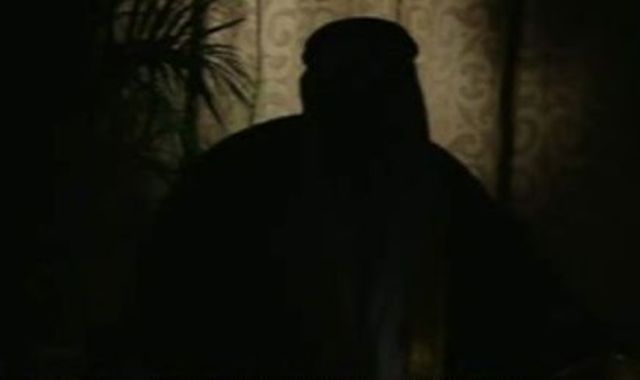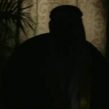
Split in the Islamic Army of Iraq over Post-Occupation Strategy
Publication: Terrorism Monitor Volume: 8 Issue: 40
By:

Only a few days after the U.S. army ended its combat mission in Iraq came the declaration of a split within one of the most prominent insurgent groups, al-Jaysh al-Islami fi’l-Iraq (Islamic Army in Iraq – IAI). A group of IAI field fighters, calling themselves the Renewal and Correction Movement (RCM), claimed that they had ousted the anonymous amir (leader) of the group along with IAI spokesman Ibrahim al-Shammari. Although the incumbent IAI leadership denied the move, it is believed that the split may have been a result of the recent appeal of al-Qaeda in Iraq for the other insurgent groups to join forces with them (al-Hayat, September 8).
Al-Shammari presented the split as an expulsion of dissenting members of the movement:
"The whole issue is that the IAI has expelled some elements at different intervals for failing to adhere to the group’s regulations, policies, and Shari’a-based methodology. After exhausting all means of reforming these people, the group sacked them and released a statement on this move, since defamation is not one of its habits, particularly when it comes to its own sons. Later on, some lazy individuals and opportunists approached the dismissed people and prepared funds, a network of suspicious relations as well as media outlets to present the IAI’s move as a split. Therefore, they planned to steal the IAI’s name and involve it in dubious projects. When the promoters of destructive projects failed to drag the IAI to their projects, they undertook this scandalous and desperate move" (al-Arab [Doha], September 16).
The IAI is one of the largest and most active Iraqi Sunni insurgent groups, although its activity has decreased over the last few years. This relative inactivity and the perception that too many IAI leaders were fighting from hotels in the Gulf States partly inspired the RCM break. IAI was one of the first Iraqi Sunni groups to fall out with al-Qaeda and its umbrella organization, the Islamic State of Iraq (ISI). IAI fighters from around the country are believed to have left the movement to join the anti-al-Qaeda Sahwa [Awakening] movement. Two years after the handover of responsibility for the Sahwa from the U.S. Army to the Iraqi Shia-led government only a few of these Sunni fighters have been integrated into the Iraqi security forces. Most of the others are worried about their future after the American withdrawal (Elaph.com, August 19).
The IAI rejected al-Qaeda’s practices and did not welcome the 2006 declaration of the Dawlat al-Iraq al-Islamiya (Islamic State of Iraq). However, the IAI leadership’s position has always been to condemn the Sahwa groups and to launch attacks against them. Nonetheless, the hard times that the Sahwa fighters are facing are affecting the morale and choices of those still in the IAI ranks. Both the Sahwa and the IAI have fought al-Qaeda and both belong to the Sunni community.
As part of its post-withdrawal strategy, al-Qaeda’s ISI has applied a carrot and stick approach with the other Sunni groups, calling for strikes on the Sahwa at the same time as it calls for the Sahwa fighters to rejoin the insurgency under the ISI umbrella. The new fracture within the IAI was reported to be the work of a new generation of young Iraqi al-Qaeda fighters. The first statement of the RCM condemned the IAI leadership practices which led to the isolation of the group from other jihadi groups in Iraq. It called for opening a new page in relations with the jihadi groups and accused the leadership of turning the IAI from an Islamic group to a tribal one. Video of attacks by the new group started to appear on pro-al-Qaeda web-sites only days after the split (al-Hayat, September 10). In its efforts to play down the new developments, the IAI leadership came up with an initiative called the “reconciliation and forgiveness campaign,” which called for reconciliation even with those who fought the IAI in the past (iaisite.org, September 9).
The IAI claims that it is the largest resistance group in Iraq. It is hard to evaluate this statement, but there is no doubt that the IAI is of considerable size and well-organized. It was one of the first groups to release videos of its attacks and its web-site is among the best managed. The IAI might deny that it has Ba’athist roots or ties to the Muslim Brotherhood, but it has always included men from various backgrounds. The Islamic nature and identity of the group is mixed with pan-Arab sentiments and Iraqi nationalism.
The movement’s military activities, its position with regard to the political process and its relations (or lack thereof) with al-Qaeda have consistently caused differences within the IAI. This most recent split is not the first; in 2007 a group called Jaysh al-Forqan left the IAI, calling for the abandonment of the political process and more involvement in military attacks on the Coalition (al-Jazeera, August 22, 2007).
The IAI has so far survived these fractures and splits. The newly-formed RCM is unlikely to dominate the main group and may ultimately become a small group within the ISI. The emergence of the new group, however, is an indicator of new trends within the Sunni insurgency in Iraq. The process of the American withdrawal has put the insurgent groups in a new environment. The days when different Sunni groups united their efforts against the Coalition forces as the sole enemy are over. The IAI and the other Iraqi Sunni Islamist factions now seem unsure about their strategies. The former ruling Ba’ath Party and al-Qaeda’s ISI look more confident in this regard. The Ba’athists have stepped up their propaganda lately, stressing their goal of returning to power, while the ISI is the only major insurgent organization to adopt a new strategy for the next phase, setting it months before the American scale-down (see Terrorism Monitor, October 10).
For a group as large as the IAI, suffering a decline in their activity and influence makes it hard to avoid dissidence and internal conflicts. The question of which ideology and strategy the organization should adopt is more urgent now than anytime before. This question is challenging not only the IAI but most of the other Iraqi Sunni insurgent groups as well. Many of these Sunni groups were once amongst the most powerful and influential in the field, but lost their momentum with the emergence of the Sahwa and seem unable to restore their influence even as the Sahwa movement has declined.





